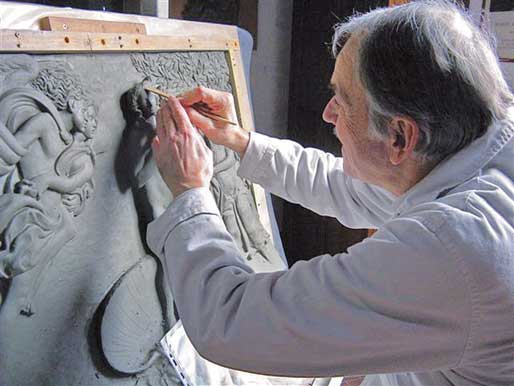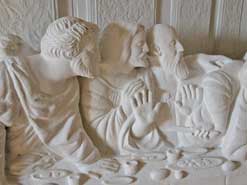The method through which Anteros, the tactile museum of ancient and modern art of the Institute for the Blind Francesco Cavazza, makes accessible paintings to persons living with vision loss, was welcomed by prestigious museums that have recently begun to offer educational services dedicated to people who are blind or visually impaired. Among these, we could name at least three of them that, because of their prestige and efficiency, deserve a particular attention. The first experience, in the order of time, is the tridimensional translation of the Last Dinner by Leonardo da Vinci, and its location in the adjoining refectory of the Santa Maria delle Grazie in Milan, where Da Vinci's masterpiece can be found, an extremely busy destination for visitors from all over the world. The second one is at the Vatican Museums: a multisensory itinerary has been developed, enabling the blind and visually impaired to explore a selection of works in the Vatican Pinacoteca (Picture Gallery) in Rome. The selected works are Melozzo da Forli's Angel Playing the Lute, and the Caravaggio's Deposition, a masterpiece of the seventeenth century. Finally, the third and most recent initiative, promoted by the Uffizi Gallery for the event "Uffizi to Touch" concerns the location, next to the original works of art, of the translation in bas relief of the Birth of Venus, a Renaissance masterpiece of undying charm, the works of art of Florentine artist Sandro Botticelli. To access the guided visits at these important museums, it is necessary to reserve online on their respective websites or by calling the information numbers for reservations of visits by blind and visually impaired people. It is important to recall that the Institute for the Blind Francesco Cavazza, through the research activities lead at the Anteros Museum for the design and development of tridimensional translations of paintings, has for many years been a partner of important national and international institutions and of the CittàItalia Foundation that promotes initiatives aiming at the preservation and accessibility of the artistic heritage. The Institute, on the evaluation of the requirements for the tactile paintings, also works with the Ministry of Cultural Heritage and Activities, taking care of training guides, the aspects relating to counselling, professional update of experts in the museology and pedagogical sectors relating to art. It has been involved for years in the planning and development of tridimensional translations of important masterpieces in art history, some of which are precisely placed in Italy's main museums. The translation of a painting requires an extremely precise and knowledgeable study

of perceptual and cognitive behaviours of persons who are born blind, who have developed blindness or who have low vision. Every translation has to accurately respect the values, shapes and composition of the original painting, giving it the spatial concepts and internal relations, and it must be executed by expert hands in applied sculpture, supported by a team of technicians and experts in aesthetic and tactile perceptions.


The plastic translation of a painting in bas relief has to be tested by blind persons for an appropriate control of the reading level. It is important to remember that, in regards to the validity of a tridimensional translation of a painting, in a bas relief, we observe complex spatial content and perspectives, overall views and detailed views. All of this requires the combined action of tactile perception and audio content. The description of the works of art, centred on an informative and evocative use of speech - understood as being an aesthetic equivalent
of the shapes expected by touch - enhances the knowledge of the works
of art explored haptically and links the quality of perception to the
accuracy of the cognition of the artistic image, leading to the right
comprehension of a representation.
Shapes are re-designed in tactile
perception in order to obtain a mental vision of the object. Thanks to the
integrated use of residual senses, particularly to the close relationship
between touch and hearing, the masterpiece translated in bas relief is
always exhibited in museums together with an audio descriptive document
that guides the person towards the simultaneous understanding of shape and
content of the works of art. This is how mentally there is harmony created
between intellectual vision and sensory perceptions. In blind persons,
imagination, understood as an instrument of knowledge, links concrete
thinking to abstract thinking through the production of symbolic thinking
and the ability for the reification of concepts.


Symbols and metaphors pertaining to tactile images are the results of conscious elaborations, decompositions and recompositions of figures taken from another sensitive and evocative world, nevertheless intelligible.